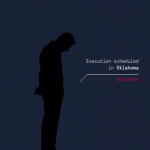The Next to Die: Watching Death Row

Looking back, we know quite a bit about who has been put to death in the United States. We know that the last person to be executed was Roderick Nunley, who died 12 days ago from lethal injection in Missouri. We have records that show he was the 1,414th person to have been executed since 1976. In fact, since executions resumed that year following a four-year suspension imposed by the Supreme Court, we know many specifics including race, age, sex and other information about those who have paid the ultimate price for their crimes.
But there has been no detailed, up-to-date schedule of coming executions.
The Next to Die aims to bring attention, and thus accountability, to these upcoming executions. As impartial news organizations, The Marshall Project and its journalistic partners do not take a stance on the morality of capital punishment, but we do see a need for better reporting on a punishment that so divides Americans. Whether you believe that execution is a fitting way for society to deplore the most heinous crimes, or that it is too expensive, racially biased and subject to lethal error, you should be prepared to look it in the face.
As with most criminal justice issues, capital punishment is primarily enforced at the state level. More than half of the states have statutes permitting and regulating the death penalty. (There is also a federal death penalty, which was last used in 2003).
Several states have litigation pending against the death penalty, which has put a halt to executions, at least temporarily. Pennsylvania, a state with one of the most populous death rows, has signed 16 execution warrants this year but has not actually executed anyone since 1999, and the governor has recently declared a moratorium. Similarly in California, the state with the most inmates condemned to die, executions have been on hold since a 2006 ruling. Nebraska’s legislature recently repealed the death penalty, a largely symbolic gesture as the state hasn’t executed anyone since 1997.
Then there are the states that are still actively executing inmates on death row. Many operate under the cover of secrecy laws and despite a nationwide shortage of lethal injection drugs. The de facto leader by count alone is Texas, a state that has executed 528 people since 1976. In all, there are nine states that have executed people since 2013: Texas, Oklahoma, Virginia, Florida, Missouri, Georgia, Alabama, Ohio and Arizona. We are also watching Arkansas, which plans to resume executions after a 10-year hiatus.
In the modern era, the death penalty has faced legal challenges over RACIAL bias as well as the METHOD used to kill. While the majority of people executed since 1976 have been white, a disproportionate number have been black (35 percent of those executed, while being only 13 percent of population). Latinos and other races make up the remaining 10 percent.
Of the ten states The Next to Die is tracking, Texas far outpaces the others in sheer volume. Per capita, Missouri has recently passed Texas and Oklahoma as the most active state performing executions.
Add our embeddable countdown to your website with our responsive widget. It works with any site that accepts an iframe. Choose from the ten states or a national view, then copy the code below.
<iframe src="https://portside.org/%3Ca%20href%3D"https://www.themarshallproject.org/next-to-die/embed/">https://www.themarshallproject.org/next-to-die/embed/" style="overflow: hidden; width: 1px; min-width: 100%;" width="100%" height="400" frameborder="0" scrolling="no"></iframe>
The Next to Die is a project by Gabriel Dance, Tom Meagher and Andy Rossback.
The Next to Die uses data from the Death Penalty Information Center combined with reporting from The Marshall Project and our partners.
This project created in conjunction with AL.com, The Atlanta Journal-Constitution, The Frontier, Houston Chronicle, Tampa Bay Times.
